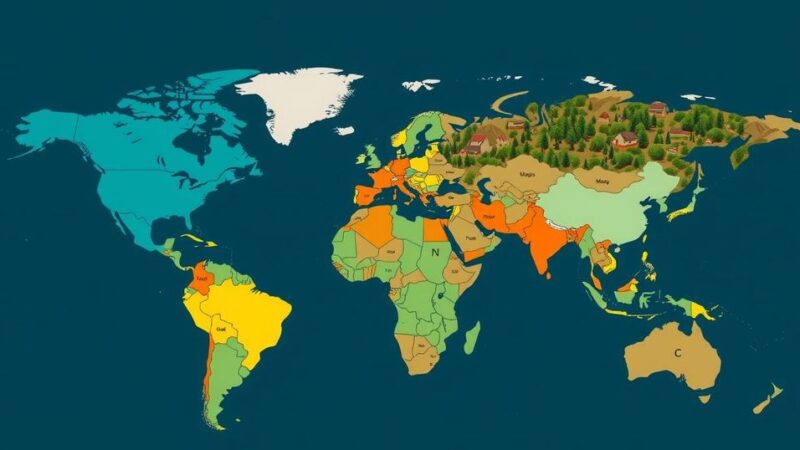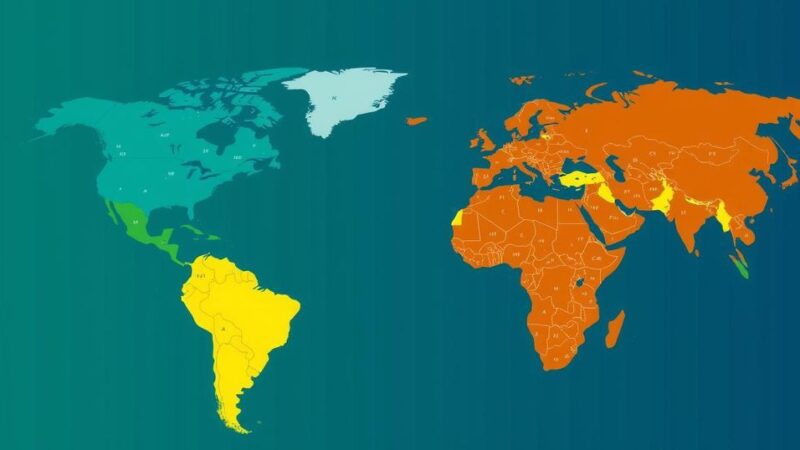The climate crisis is often viewed through a narrow lens focusing primarily on temperature changes, thereby overshadowing the urgent issue of biodiversity loss. Recently, COP16, a biodiversity summit, went largely unnoticed, with most nations failing to commit to agreements aimed at preserving endangered species. The article argues that a more balanced approach that emphasizes the immediate human and ecological impacts of biodiversity loss and climate change, coupled with a hopeful narrative, is crucial for fostering global environmental action.
The world is at risk of neglecting the profound implications of the ongoing climate crisis, primarily concerning biodiversity loss and extinction. While the global climate change conference, COP29, draws significant media attention, the recent COP16 summit on biodiversity barely made headlines, highlighting a troubling disparity. Alarmingly, 80% of countries attending COP16 failed to present their commitments to a critical UN nature agreement, revealing a stark disengagement from addressing these pressing environmental challenges. Wildlife populations have suffered drastic declines, with an average reduction of 73% since 1970. Notably, numerous species have vanished, including the golden toad and the Pinta giant tortoise. Despite the urgent threats posed by the potential extinction of 46,000 species—over a third of the planet’s tree species—the focus remains disproportionately skewed towards climate change, overshadowing the equally critical issue of nature loss. This situation is reflected in the political prioritization of climate discussions over biodiversity, as evidenced by the British government’s response to recent conferences. Prime Minister Rishi Sunak faced public pressure to attend COP27 but exhibited little urgency regarding the biodiversity conference, merely appointing a representative shortly before the event. The trend of prioritizing climate over biodiversity traces back to the 1980s, when environmental movements began emphasizing temperature changes instead of endangered species. Current media coverage (up to eight times more for climate change than biodiversity loss) reinforces this trend, which impacts public and political engagement with biodiversity issues. While the interconnectivity of climate change and biodiversity loss is undeniable, the abstract nature of climate statistics fails to resonate with the public and detracts from the tangible human and ecological costs associated with these crises. To effectively combat climate change, it is imperative to consider the role of nature, such as forests and wetlands, in carbon absorption and ecosystem resilience. Moreover, an emotional appeal that encompasses both the human and animal tolls of climate change is necessary for mobilizing societal action. Engaging narratives around real-time impacts, statistics that are relatable, and a hopeful vision for future ecological balance—free of the dread and despair often associated with environmental messaging—may enhance public responsiveness and commitment toward conservation efforts.
The article addresses the pressing issue of the climate crisis, emphasizing the interconnectedness of climate change and biodiversity loss. It highlights the lack of attention given to biodiversity conferences compared to climate discussions, pointing out the considerable disengagement by nations in taking meaningful action to protect wildlife and ecosystems. The author reflects on historical shifts in environmental advocacy, the importance of emotional engagement in conveying environmental challenges, and the necessity of a hopeful narrative to inspire collective action. By considering both the immediate threats posed by climate change and the crucial role of biodiversity, this discourse aims to recalibrate the focus of public and governmental efforts in addressing these urgent global issues.
In conclusion, the current discourse surrounding the climate crisis must broaden to encompass the urgent plight of biodiversity, which is intricately linked to climate stability. The failure of international summits to yield substantive commitments from nations reveals a critical gap in global environmental policy. By shifting the narrative to highlight not only data and statistics but also the tangible impacts on human lives and ecosystems, stakeholders can foster a more comprehensive understanding of the ecological crisis. An emphasis on hope and resilience within the natural world can further galvanize public support and action, underscoring the necessity of joint efforts to combat climate change and preserve biodiversity for future generations.
Original Source: www.theguardian.com






